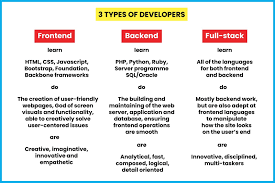Software Development Website: Why You Need One
In today’s digital age, having a website is no longer just an option – it’s a necessity. This is especially true for software development companies. A software development website can be the key to your success in the industry.
Here are some reasons why you need a software development website:
Online Presence: Having a website gives you an online presence that can be accessed by anyone, anywhere in the world. This means that potential clients or customers can find you easily and learn more about your services.
Credibility: A well-designed and informative website can give your company credibility in the eyes of potential clients. It shows that you are serious about your business and are willing to invest time and resources into creating a professional online presence.
Marketing: Your website can serve as a powerful marketing tool. You can use it to showcase your portfolio, list your services, and provide valuable information to potential clients.
Lead Generation: With the right call-to-action buttons, you can turn visitors into leads by encouraging them to contact you or fill out a form for more information.
Competitive Advantage: In today’s competitive market, having a website sets you apart from those who don’t have one. It shows that you are keeping up with the times and are willing to adapt to changing technologies.
When creating your software development website, there are some key elements that should be included:
Clear Navigation: Your website should be easy to navigate with clear menus and links.
Responsive Design: Your website should be optimized for mobile devices so that it can be accessed on any device.
Portfolio Showcase: Showcase your previous work so that potential clients can see what you’re capable of.
Services Offered: Clearly list all of the services that your company offers so that visitors know what they can expect from you.
Testimonials: Include testimonials from previous clients to show that you have a track record of success.
In conclusion, having a software development website is essential for any company in the industry. It can help you establish an online presence, build credibility, generate leads, and give you a competitive advantage. By including key elements such as clear navigation, responsive design, portfolio showcase, services offered, and testimonials, you can create a website that will help your business thrive in the digital age.
Answers to 7 Common Questions About Website Development Services
- What type of software development services do you offer?
- How much does it cost to develop a website?
- What is the timeline for developing a website?
- What technologies are used in web development?
- Do you provide maintenance and support for websites?
- How can I get started with web development?
- What is the process for creating a website from scratch?
What type of software development services do you offer?
We offer a full range of software development services, including custom software development, web and mobile application development, cloud computing solutions, system integration and maintenance services. We also offer support for legacy systems and enterprise resource planning (ERP) solutions. Our team is experienced in working with a variety of programming languages and platforms such as Java, .NET, PHP, Python, Ruby on Rails, Node.js and more.
How much does it cost to develop a website?
The cost of developing a website can vary greatly depending on various factors such as the type of website, the complexity of its features, and the expertise and location of the web development team.
A simple static website with a few pages and basic features can cost anywhere from $500 to $5,000 or more. However, if you have specific requirements such as e-commerce functionality, custom web applications, or complex integrations with other systems, the cost can increase significantly.
For example, an e-commerce website with advanced features such as shopping cart functionality, payment gateway integration, and customized product pages can cost anywhere from $5,000 to $50,000 or more. Similarly, a custom web application that requires extensive programming and development work can cost upwards of $100,000 or more.
It is important to note that the cost of developing a website also depends on the location of the web development team. Developers in countries like India or Ukraine may offer lower rates compared to developers in countries like the United States or Canada.
In summary, the cost of developing a website can vary greatly depending on various factors. It is best to consult with a reputable web development team to get an accurate estimate based on your specific requirements.
What is the timeline for developing a website?
The timeline for developing a website can vary depending on a number of factors, such as the complexity of the website, the size of the team working on it, and the availability of resources. However, here is a general timeline that can give you an idea of what to expect:
Planning Phase (1-2 weeks):
During this phase, you will work with your web development team to determine the goals and objectives of your website. You will also discuss the target audience, content requirements, and design preferences.
Design Phase (2-4 weeks):
In this phase, your web development team will create wireframes and mockups that give you an idea of what your website will look like. You will provide feedback on the designs until you are satisfied with the final product.
Development Phase (6-12 weeks):
This is where the actual coding and development work takes place. Your web development team will use the approved designs to create a functional website that meets all of your requirements.
Testing Phase (1-2 weeks):
Once development is complete, your website will undergo rigorous testing to ensure that it works properly on all devices and browsers.
Launch Phase (1 week):
After testing is complete and any necessary changes have been made, your website will be launched to the public.
Keep in mind that this timeline is just a general guideline and may be shorter or longer depending on various factors. Additionally, ongoing maintenance and updates may be required after launch to ensure that your website continues to function properly over time.
What technologies are used in web development?
There are several technologies used in web development. The specific technologies used depend on the type of website being developed, the functionality required, and the preferences of the developers. Here are some of the most commonly used technologies in web development:
HTML: Hypertext Markup Language (HTML) is a standard markup language used to create web pages. It provides the structure and content of a website.
CSS: Cascading Style Sheets (CSS) is a style sheet language used to describe how HTML elements should be displayed on a webpage. It provides the visual design of a website.
JavaScript: JavaScript is a programming language used to add interactivity and dynamic functionality to websites. It can be used for things like form validation, animations, and user interface enhancements.
PHP: PHP is a server-side scripting language used for creating dynamic web pages. It can interact with databases and other server-side technologies to create complex applications.
Python: Python is another server-side scripting language that can be used for web development. It’s known for its simplicity and ease of use.
SQL: Structured Query Language (SQL) is a database management language that allows developers to manage data stored in databases.
Frameworks: Web development frameworks like Ruby on Rails, Django, and Laravel provide pre-built code libraries and tools that make it easier for developers to build complex web applications quickly.
In addition to these technologies, there are many other tools and technologies that can be used in web development depending on the specific needs of the project. These include content management systems (CMS), version control systems like Git, front-end frameworks like React or AngularJS, and many more.
Overall, web development requires knowledge of several different technologies and tools in order to create functional, attractive websites that meet the needs of users and clients.
Do you provide maintenance and support for websites?
Yes, we provide maintenance and support for websites. We offer a range of services, including website monitoring, security updates, content management, bug fixes, and more.
How can I get started with web development?
Getting started with web development can seem like a daunting task, but with the right resources and approach, it can be a fun and rewarding experience. Here are some steps you can take to get started:
Learn the Basics of HTML, CSS, and JavaScript:
HTML (Hypertext Markup Language), CSS (Cascading Style Sheets), and JavaScript are the building blocks of web development. HTML is used to structure content on a webpage, CSS is used to style the webpage, and JavaScript is used to add interactivity.
There are many online resources available for learning these languages, such as W3Schools and Codecademy. These websites offer interactive tutorials that allow you to learn at your own pace.
Choose a Text Editor:
A text editor is software that allows you to write code for your website. There are many free text editors available such as Notepad++, Sublime Text, and Visual Studio Code. Choose one that suits your needs and preferences.
Practice:
Practice makes perfect when it comes to web development. Start by building simple projects such as a personal webpage or a simple blog. As you gain more experience, you can move on to more complex projects.
Join Online Communities:
Joining online communities such as forums or social media groups can be helpful in getting feedback on your work and connecting with other developers.
Keep Learning:
Web development is constantly evolving, so it’s important to keep learning new things. Subscribe to blogs or newsletters that cover web development topics, attend conferences or meetups in your area.
In conclusion, getting started with web development requires learning the basics of HTML, CSS, and JavaScript; choosing a text editor; practicing by building simple projects; joining online communities; and keeping up-to-date with new trends and technologies. Remember, web development is a journey, not a destination. Enjoy the process and keep learning!
What is the process for creating a website from scratch?
Creating a website from scratch can seem like a daunting task, but it can be broken down into several manageable steps:
Step 1: Define Your Website’s Purpose and Goals
The first step in creating a website is to define its purpose and goals. What do you want your website to achieve? Are you creating an e-commerce site to sell products, or a blog to share your thoughts and ideas? Defining your website’s purpose and goals will help guide the rest of the process.
Step 2: Plan Your Website’s Structure
Once you have defined your website’s purpose and goals, the next step is to plan its structure. This includes creating a sitemap that outlines all of the pages on your site and how they are connected.
Step 3: Design Your Website
With your sitemap in hand, you can now begin designing your website. This includes choosing a color scheme, selecting fonts, and deciding on the layout of each page. You may want to hire a professional web designer or use a website builder tool to help with this step.
Step 4: Develop Your Website
Once you have designed your website, it’s time to develop it. This involves writing the code that will bring your design to life. If you’re not familiar with coding, you may want to hire a web developer or use a content management system (CMS) like WordPress.
Step 5: Test Your Website
Before launching your website, it’s important to test it thoroughly. This includes checking for broken links, testing forms and other interactive elements, and making sure that your site looks good on different devices.
Step 6: Launch Your Website
Once you’ve tested your site and are satisfied with its functionality and design, it’s time to launch it. This involves uploading your files to a web server and making your site live on the internet.
Step 7: Maintain Your Website
Creating a website is an ongoing process. Once your site is live, you’ll need to maintain it by updating content, fixing bugs, and adding new features as needed.
In conclusion, creating a website from scratch requires careful planning, design, development, testing, and ongoing maintenance. By following these steps and seeking help from professionals when needed, you can create a website that meets your goals and serves your audience well.




